.
16.07.2014
MOSCOW, Russia’s Progress M-24M resupply spacecraft, due to be launched on July 24, is to deliver 45 snails to the International Space Station (ISS) for scientific experiments, Russian space agency Roscosmos reported Tuesday.
Containers with snails are to be delivered to the ISS to continue the Regenration-1 experiment.
“The goal of the experiment is to see how space flight influences morphological and electrophysiological properties of a biological object’s regeneration process,” the report reads.
The data obtained from the experiments could be used to help develop medical support for long-term space flights.
A total of 130 Progress spacecraft have supported orbiting outposts over the past three decades, lifting many tons of supplies to low Earth orbit.
The previous spacecraft in the Progress series, the Progress M-23M, was launched on April 9, on a mission to deliver fuel, additional hardware, food, water and oxygen for the crew, as well as scientific equipment for conducting experiments to the ISS.
Quelle: RIA NOVOSTI
.
Update: 20.07.2014
.
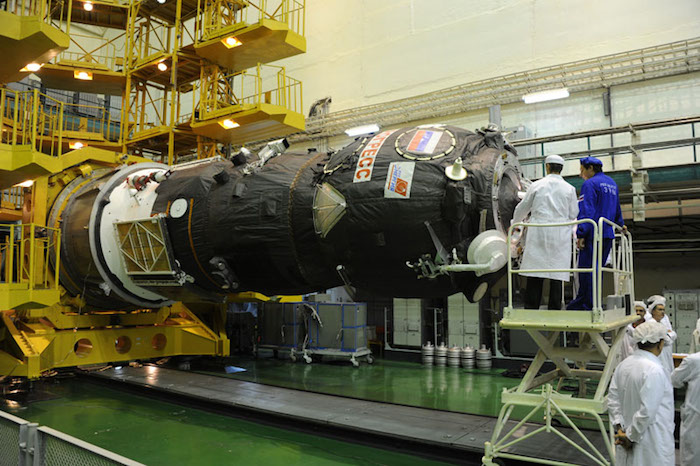
The Progress 55 cargo ship is inspected at the Baikonur Cosmodrome in Kazakhstan prior to encapsulation in preparation for its July 23 launch to the International Space Station.
.
Meanwhile on the Russian side of the orbiting complex, preparations continue for next week’s arrival of another cargo vehicle.
Skvortsov completed loading the Progress 55 craft with trash and unneeded items and closed its hatch in preparation for its undocking Monday. Progress 55, which arrived at the orbiting complex in April, will undock from the Pirs docking compartment at 5:44 p.m. Monday and move to a safe distance away from the station for 10 days of engineering tests before it is deorbited on July 31 to burn up in the atmosphere over the Pacific Ocean.
Quelle: NASAThe departure of Progress 55 will clear Pirs for the next Russian space freighter, Progress 56. On Wednesday, July 23, Progress 56 will launch at 5:44 p.m. from the Baikonur Cosmodrome in Kazakhstan (3:44 a.m. local time on July 24), with about 5,700 pounds of food, fuel and supplies for the station's Expedition 40 crew. Progress 56 will make a four-orbit, six-hour trip to the space station and dock at 11:30 p.m.
Artemyev spent much of his day inspecting and photographing the windows inside Pirs and the Poisk Mini-Research Module-2. He also performed routine maintenance on the life-support system in Zvezda.
The third cosmonaut aboard the station, Flight Engineer Max Suraev, continued a monthly inspection of the structural elements and cables inside Zvezda before moving on to remove a protective curtain in one of the crew quarters for the Matryoshka radiation-monitoring experiment.
Over the weekend, the station’s six crew members will take care of weekly housekeeping chores as they clean frequently touched surfaces with disinfectant wipes and vacuum dust from filter grilles. They also will continue their daily 2.5-hour exercise regimen to prevent the loss of muscle mass and bone density that would otherwise occur during their long-duration stay in space.
.
Update: 22.07.2014
.
Russian Progress Craft Undocks From Station
.
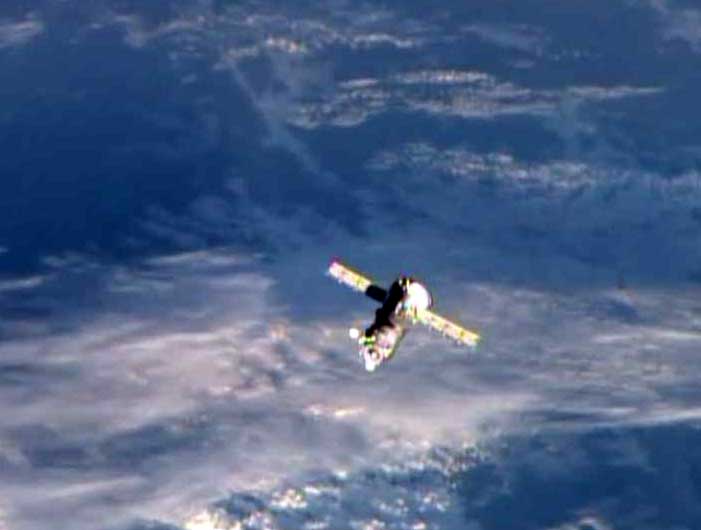
A video camera aboard the International Space Station captured this view of the ISS Progress 55 cargo craft shortly after undocking Monday.
Image Credit: NASA TV
.
A video camera aboard the International Space Station captured this view of the ISS Progress 55 cargo craft shortly after undocking Monday.
Image Credit: NASA TV
A Russian space freighter departed the International Space Station Monday, clearing the way for the next express delivery of cargo on Wednesday.
The ISS Progress 55 cargo craft undocked from the Pirs docking compartment at 5:44 p.m. EDT Monday after spending more than three months at the orbiting complex. Progress 55 delivered nearly three tons of food, fuel and supplies when it arrived at the orbiting complex on April 9.
After undocking, the Progress moved to a safe distance away from the station for 10 days of engineering tests before it is deorbited on July 31. Now filled with trash and station discards, Progress 55 will burn up as it re-enters the Earth’s atmosphere over the Pacific Ocean.
At the Baikonur Cosmodrome in Kazakhstan, preparations continue for the launch of ISS Progress 56 to the International Space Station.
Image Credit: RSC Energia
The departure of Progress 55 clears Pirs for the arrival of the next Russian space freighter. ISS Progress 56 is scheduled to launch at 5:44 p.m. Wednesday from the Baikonur Cosmodrome in Kazakhstan (3:44 a.m. local time on Thursday), with about 5,700 pounds of food, fuel and supplies for the station's Expedition 40 crew. Progress 56 will make a four-orbit, six-hour trip to the space station and dock at 11:30 p.m.
The Progress 56 craft, atop its Soyuz booster, will roll to the launch pad at Site 1 at Baikonur early Tuesday for final pre-launch preparations.
In preparation for the arrival of Progress 56, Flight Engineer Alexander Skvortsov and Max Suraev began their workday Monday in the Zvezda service module with a practice session on the Telerobotically Operated Rendezvous System, or TORU. Russian vehicles dock to the station automatically through the use of the Kurs automated rendezvous system, but the crew can use TORU to manually guide a Russian spacecraft to its docking port if a problem arises.
Quelle: NASA
.
Update: 23.07.2014
.
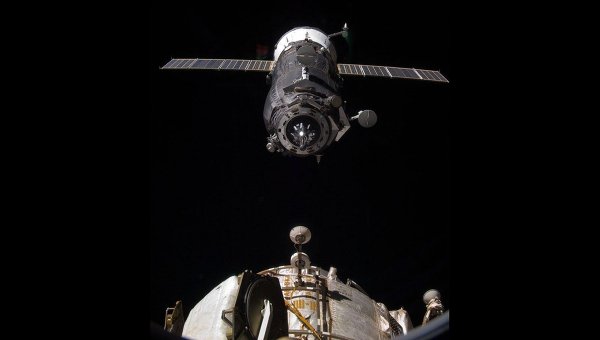
Russia’s Progress M-23M resupply spacecraft is due to get undocked on Tuesday from the International Space Station (ISS) and embark on an autonomous scientific flight to study the impact of its engines on the plasma of the Earth's ionosphere.
“An experiment titled ‘Radar-Progress’ is scheduled to be held on board the Progress [spacecraft] from July 22 to August 1, it is connected to the studies by earth-based observatories on the light-reflecting capacity of plasma heterogeneities generated by propulsion systems in the ionosphere,” a source in the Russian mission control center told RIA Novosti.
Another Progress cargo ship is to be launched on July 24. It will bring 45 snails to the ISS for a scientific experiment, which will see how space flight influences morphological and electrophysiological properties of a biological object’s regeneration process, Russian space agency Roscosmos said last week.
The unmanned spaceship will also deliver fuel, food, water and oxygen for the crew, as well as scientific equipment. The Soyuz-U carrier rocket will put the new Progress M-24M ship into orbit on July 24, at 1:44 a.m. Moscow time.
A total of 130 Progress spacecraft have supported orbiting outposts over the past three decades, lifting many tons of supplies to low Earth orbit.
Quelle: RIA NOVOSTI
.
Update: 23.00 MESZ
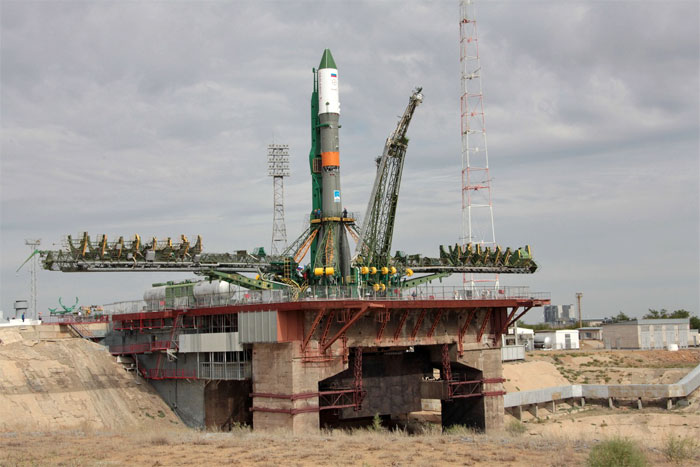
The ISS Progress 56 cargo ship is erected on the launch pad at the Baikonur Cosmodrome in Kazakhstan.
.
Update: NASA-LIVE 23.30
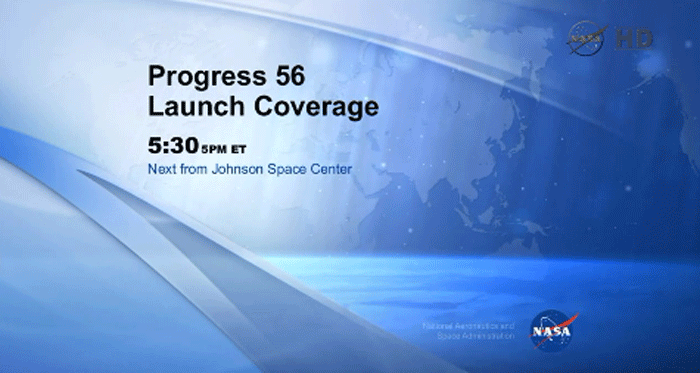
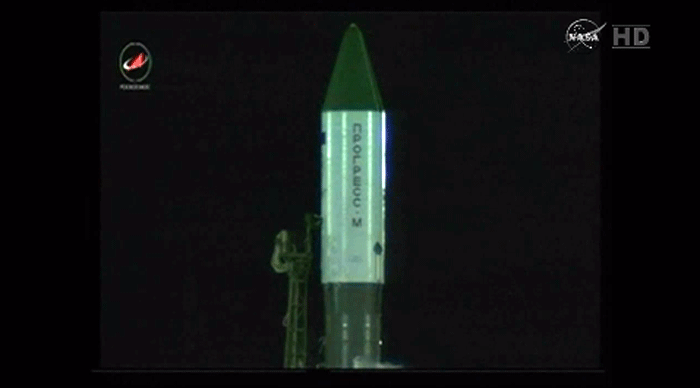
...
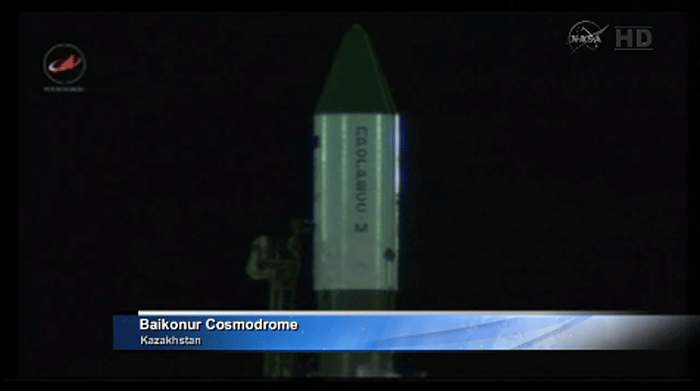
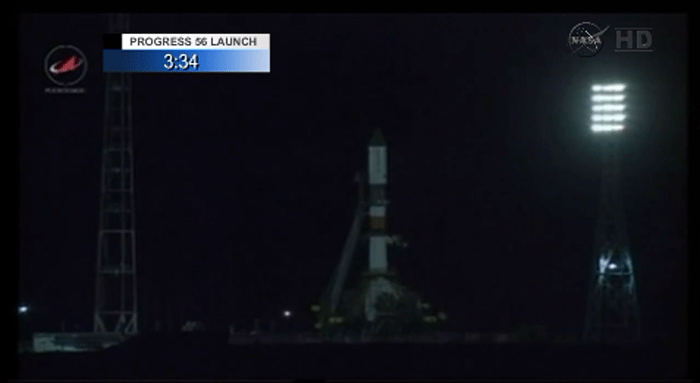
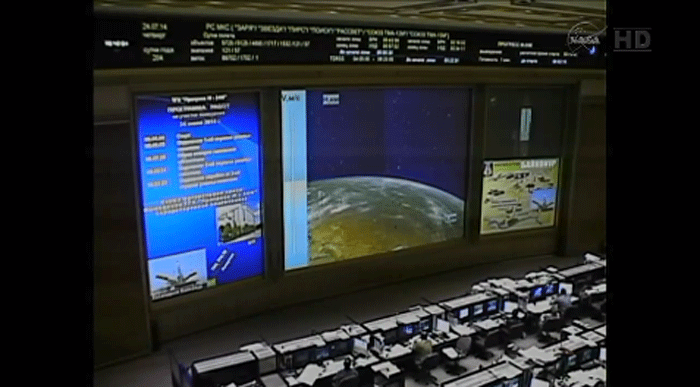
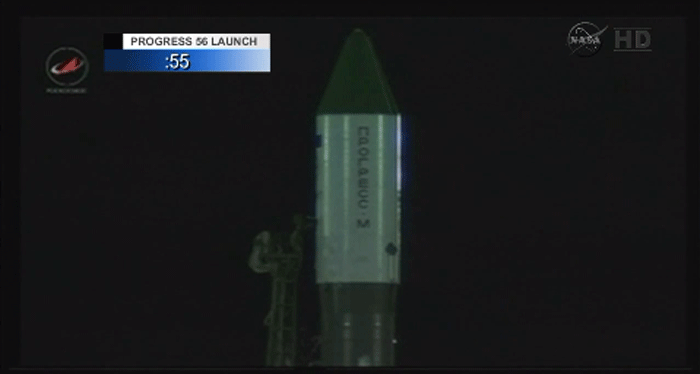
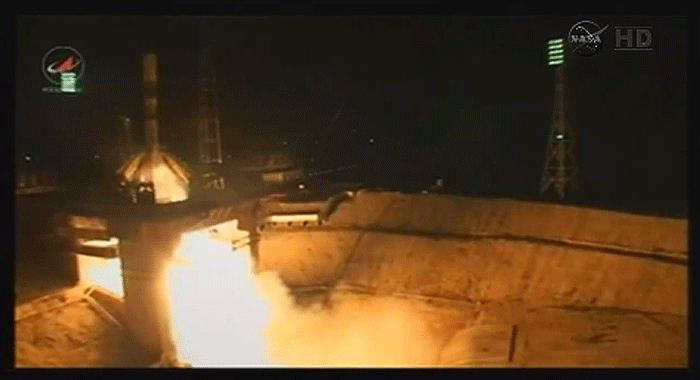
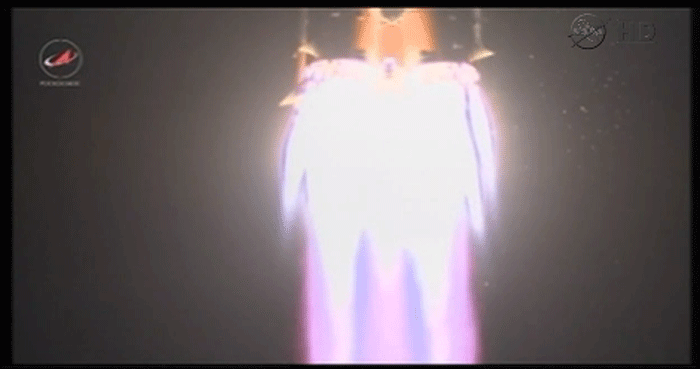
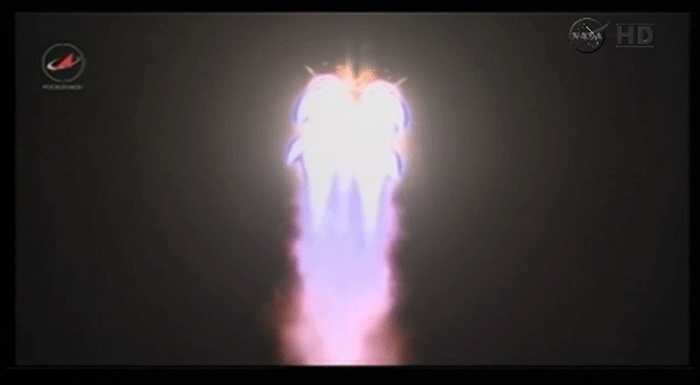
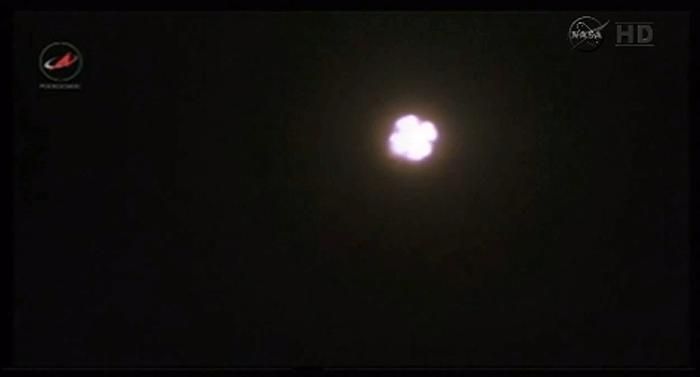
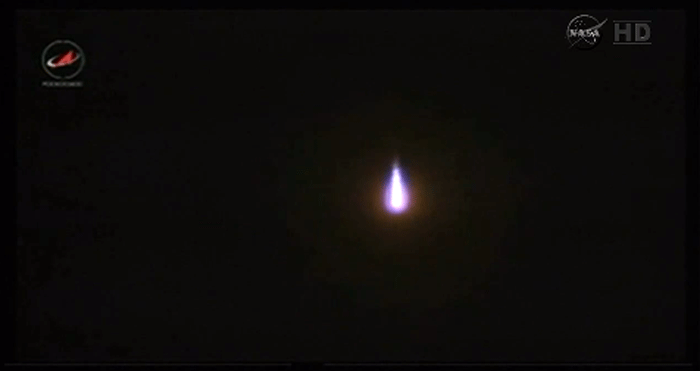
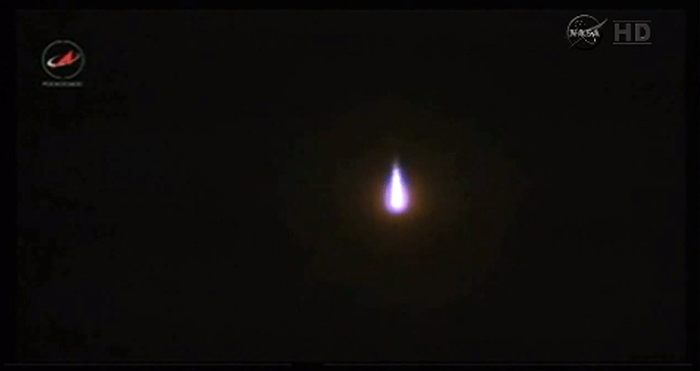
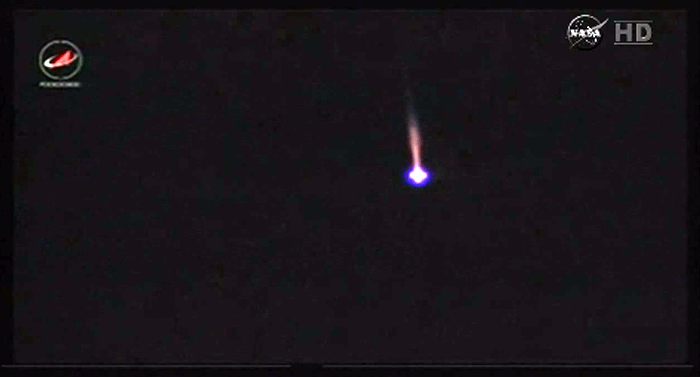
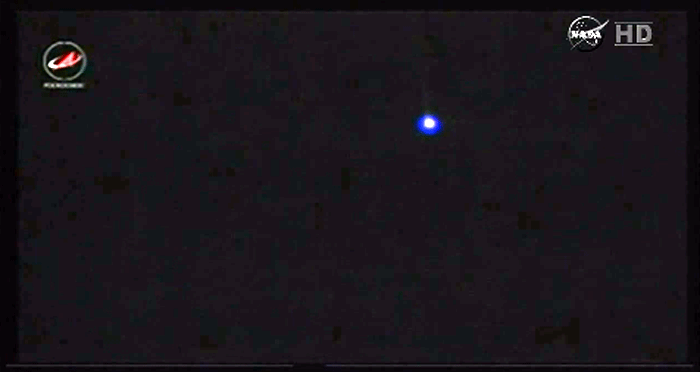
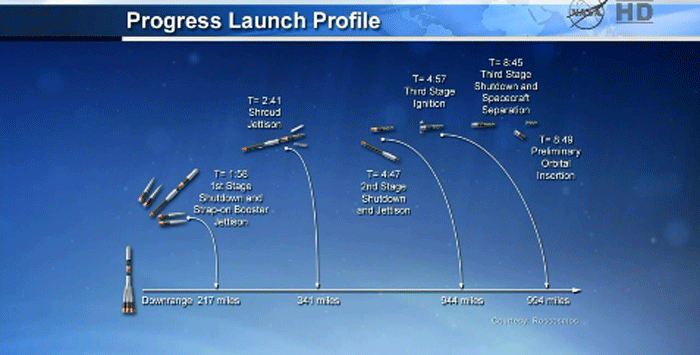
Quelle: NASA-TV
.
Update: 24.07.2014
.
Überlebenskünstler auf der Reise zur ISS
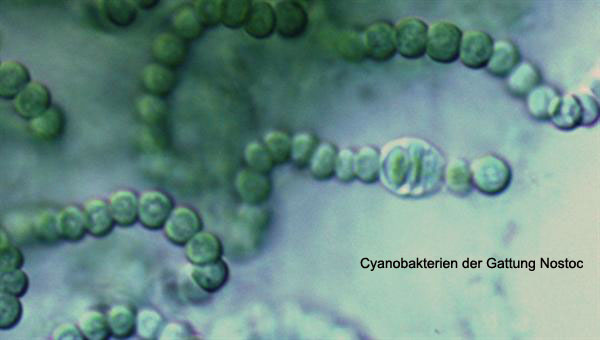
Progress-Rakete befördert Blaualgen und Biofilme für DLR-Experimente ins All
Sie sind zäh, widerstandsfähig und können an den unwirtlichsten Orten auf der Erde überleben - und nun sollen sie dies auch unter Weltraumbedingungen unter Beweis stellen: Am 23. Juli 2014 starten Blaualgen (Cyanobakterien der Gattung Nostoc) und Biofilme (Deinococcus geothermalis) um 23.44 Uhr mitteleuropäischer Zeit mit einer Progress-Rakete zur Internationalen Raumstation ISS. Bei einem Weltraumausstieg voraussichtlich am 18. August werden die Proben des Deutschen Zentrums für Luft- und Raumfahrt (DLR) an der Außenseite der ISS in die Anlage EXPOSE-R2 eingesetzt. Dann soll mit den Experimenten BIOMEX (Biology and Mars-Experiment) und BOSS (Biofilm Organisms Surfing Space) untersucht werden, ob die Organismen beispielsweise ultraviolette Strahlung, kosmische Strahlung, Temperaturschwankungen und simulierte Marsbedingungen überstehen und somit auch auf anderen Planeten überleben könnten.
Dr. Jean-Pierre de Vera vom DLR-Institut für Planetenforschung hat seine Probanden für die Weltraumreise selbst in der Antarktis gesammelt und sie anschließend in seiner Marssimulationskammer getestet: "Die Cyanobakterien sind extrem überlebensfähig - zumindest auf der Erde." Auch in den Anlagen des DLR-Instituts für Luft- und Raumfahrtmedizin wurden die Bakterien ausgiebig unter Strahlung und Vakuum auf die Probe gestellt. Jetzt folgt mit dem Experiment BIOMEX der nächste Schritt, der die Probanden mit dem starken Überlebenswillen ins All bringt. Mehrere hundert Proben - darunter auch Urbakterien, Algen, Flechte, Pilze und Moose weiterer nationaler und internationaler beteiligter Partner - werden dort über ein Jahr lang an der Außenseite der ISS verbringen.
Der Mars im Kleinformat an der ISS
Mikrobiologe und Planetenforscher de Vera lässt dabei an der ISS Marsbedingungen entstehen. Zwei marsähnliche Böden hat er dafür gemeinsam mit dem Naturkundemuseum Berlin zusammengemischt: Zum einen entstand so aus Ton und Sedimenten ein Boden, der die Epoche simuliert, als es auf dem Mars noch Flüsse und Seen gab; zum anderen verwendete das Team Vulkanasche, um die Epoche des Vulkanismus auf dem Mars zu simulieren. Dabei stützten sich die Wissenschaftler auf Daten, die unter anderem von den Marsrovern vor Ort über die mineralischen Bestandteile des Mars geliefert wurden. Um herauszufinden, ob der Marsboden für die Organismen oder gar für einige Zellbestandteile einen Schutz vor der Weltraumstrahlung bietet, werden die Bakterienproben und biologischen Substanzen in den Versuchsanlagen unterschiedlich stark in dieses Material eingebettet. Zudem schafft eine Begasung mit Kohlendioxid eine künstliche Marsatmosphäre für die Probanden in der Versuchsanlage. "So können wir herausfinden, ob die dünne Atmosphäre und die Bodenschichten auf dem Mars schützen und dieser Planet somit für Leben geeignet ist", sagt Dr. Jean-Pierre de Vera. "Wir können damit ebenfalls feststellen, ob die getesteten weltraum-stabilen Zellfragmente als eindeutige Spuren von Leben in Frage kommen. Wäre das der Fall, so könnte dies die zukünftige Suche nach Leben auf dem Mars unterstützen." Die weltraum-stabilen, biologischen Stoffe könnten bei weiteren Missionen zur Marserkundung als Bezugsstoffe für die dort verwendeten Instrumente dienen.
Erfolgsstrategie Biofilm
Dr. Petra Rettberg vom DLR-Institut für Luft- und Raumfahrtmedizin setzt im Experiment BOSS auf andere Überlebenskünstler, deren Lebensweise auf der Erde allgegenwärtig ist und auch schon einmal dort vorkommt, wo man sie nicht finden möchte, beispielsweise in Wasserleitungen oder im Duschkopf: "Biofilme gehören zu den ältesten Organismengemeinschaften auf der Erde, die wir heute nachweisen können, und haben vermutlich auch auf anderen Planeten gute Überlebenschancen," sagt Dr. Rettberg. Die Erfolgsstrategie des ausgewählten Organismus Deinococcus geothermalis: Das Bakterium lebt in einer Form von vielen Zellschichten, die von einer selbstproduzierten extrazellulären umgeben sind und schützt sich auf diese Weise vor schädlichen äußeren Einflüssen. Immer wieder setzte die Strahlenbiologin ihr Versuchsobjekt gezielt extremen Temperaturen aus, lagerte es wochenlang im Vakuum oder bestrahlte die Organismen mit einer starken UV-Lampe. Die Probanden überlebten. Im All sollen sie nun erstmals die Bedingungen des freien Weltraums und simulierte Marsbedingungen erleben, die durch unterschiedliche Filter über den Proben, eine künstliche Marsatmosphäre sowie Marsdruck im Orbit erzeugt werden. Parallel werden dieselben Organismen in Form von Einzelzellen untersucht, um den Schutzeffekt der Matrix zu ermitteln. Europäische und amerikanische Kooperationspartner beteiligen sich mit anderen Arten biofilm-bildender Organismen, um die zu erwartenden Erkenntnisse verallgemeinern zu können.
Effektivere Suche nach Leben im Weltall
Die Experimente, die das DLR mit internationalen Teams als zwei von vier Experimenten in der EXPOSE-Anlage der ISS betreibt, werden den Wissenschaftlern Aufschluss darüber geben, welche Organismen im Weltraum oder auf dem Mars überhaupt Überlebenschancen haben. Die Resultate der Weltraumexperimente sind wichtig, um die Entstehung von Leben im Sonnensystem zu erklären: "Die Überlebenskünstler im All könnten das Leben von einem Himmelskörper zum nächsten transportiert haben", sagt Planetenforscher de Vera. Auch die Suche nach Leben auf anderen Planeten könnte einfacher werden: "Mit den unterschiedlichen Bedingungen und Varianten, die wir an der Außenseite der ISS testen, können wir viel genauer definieren, wo man auf anderen Planeten wie dem Mars nach Leben suchen müsste", sind sich Dr. Petra Rettberg und Dr. Jean-Pierre de Vera einig.
Mindestens ein Jahr werden die Probanden den harschen Weltraumbedingungen ausgesetzt und spätestens im August 2016 wieder zur Erde zurücktransportiert. Für die Wissenschaftler am Boden beginnt dann die detaillierte Auswertung, welcher Organismus sich als besonders überlebensfähig erweist, welche Strategie den meisten Schutz im Weltall bietet und welche Biosubstanzen als Bezugsstoffe für die Suche nach Leben auf dem Mars dienen könnten.
Quelle: DLR
.
Update: 20.40 MESZ
.
Cargo Ship Docks to Station Less Than Six Hours After Launch
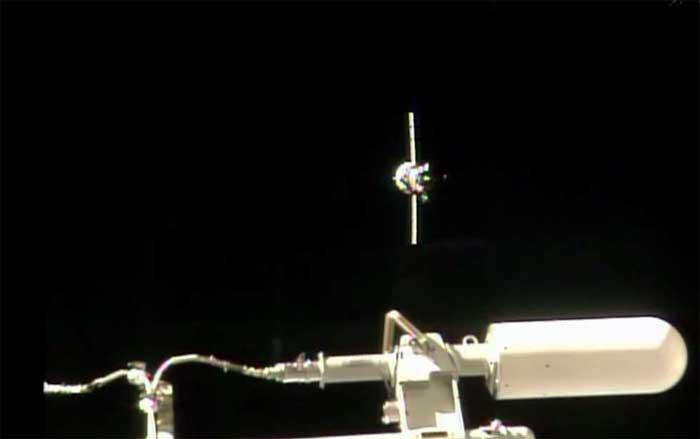
Cargo Ship Docks to Station Less Than Six Hours After Launch
.
The ISS Progress 56 resupply spacecraft, packed with almost three tons of cargo, automatically docked to the International Space Station’s Pirs docking compartment at 11:31 p.m. EDT Wednesday, less than six hours after its launch from the Baikonur Cosmodrome in Kazakhstan.
At the time of docking, the station was soaring 259 miles over the Pacific Ocean off the west coast of South America.
The Soyuz rocket carrying Progress 56 launched from Baikonur at 5:44 p.m. (3:44 a.m., Baikonur time) to send the cargo ship on its expedited, 4-orbit trek to the station.
The new Progress is loaded with 1,764 pounds of propellant, 48 pounds of oxygen, 57 pounds of air, 926 pounds of water and 2,910 pounds of spare parts, experiment hardware and other supplies for the Expedition 38 crew. Expedition 40 Flight Engineers Alexander Skvortsov and Max Suraev will open the hatch to Progress Thursday morning to begin unloading the cargo.
The ISS Progress 55 cargo craft, which undocked from Pirs on Monday, is now a safe distance from the complex for a series of engineering tests prior to being sent to a destructive re-entry over the Pacific Ocean on July 31.
The station’s crew began the workday at 6 a.m. Wednesday, four hours later than the usual 2 a.m. reveille to accommodate the late-night arrival of Progress.
Commander Steve Swanson and Flight Engineer Alexander Gerst participated in more Ocular Health exams as flight surgeons track the vision health of the astronauts aboard the station. NASA recently identified that some astronauts experience changes in their vision, which might be related to effects of microgravity on the cardiovascular system. Researchers are working to understand and prevent these changes in astronauts. With guidance from the Ocular Health team on the ground, Gerst performed an ultrasound scan of Swanson’s eyes. Flight Engineer Reid Wiseman then pitched in to help out with Wednesday’s exams and conducted an ultrasound scan of Gerst’s eyes. Swanson and Gerst later measured each other’s blood pressure and collected electrocardiogram data for Ocular Health.
Swanson also temporarily removed the Multi-user Droplet Combustion Apparatus from the Combustion Integrated Rack’s combustion chamber to replace some igniter tips.
The commander then moved on to assist Wiseman, who was participating in another round of data collection for the Sprint exercise study. Sprint measures the effectiveness of high-intensity, low-volume exercise training in minimizing the loss of muscle mass and bone density that occurs during spaceflight. Station crew members currently work out around 2 ½-hours every day, and the Sprint team is looking into ways to reduce that total exercise time while maintaining crew fitness
Wiseman also set up and photographed new test samples for the Binary Colloidal Alloy Test, or BCAT. Results from this ongoing investigation of colloids – mixtures of small particles distributed throughout a liquid – will help materials scientists to develop new consumer products with unique properties and longer shelf lives.
For the ongoing Burning And Suppression of Solids experiment, or BASS, Gerst conducted a series of flame tests at reduced oxygen pressure to get a stable blue flame for a longer period of time. Housed inside the station’s Microgravity Science Glovebox, BASS is investigating the hypothesis that some materials may actually become more flammable in space. Results from BASS will help screen materials for their use aboard future spacecraft. The research also provides scientists with improved computational models that will aid in the design of fire detection and suppression systems both in space and here on Earth.
Gerst also used several dermatology tools on his forearm to collect data for the Skin B experiment, which investigates the accelerated aging of skin that seems to occur during spaceflight. Results from this study will improve the understanding of the mechanisms of skin aging as well as provide insight into the aging process of similar body tissues.
On the Russian side of the station, Suraev and Flight Engineer Oleg Artemyev began the day with an examination of the veins in their lower legs to provide data on the body’s adaption to long-duration spaceflight.
With Progress 56 slated to arrive at the station well-past the crew’s usual bedtime, all three Russian cosmonauts aboard the station took a 4-hour nap at beginning 12:30 p.m. Afterward, Skvortsov and Suraev resumed preparations for the arrival of Progress 56.
The station also conducted a “deboost” Wednesday morning to steer clear of some space debris.
The engines of the station’s Zvezda service module conducted a 32-second firing at 6:57 a.m. EDT to slightly lower the orbit of the complex and steer clear of a fragment of debris from a Russian Breeze-M upper stage used in the launch of a Russian satellite in December 2011.
The “deboost” of the station was coordinated between NASA and Russian flight controllers after tracking data confirmed that the fragment would have posed a high probability of a conjunction with the station. Although last-minute tracking data indicated that the fragment would have passed a safe distance away from the station, flight controllers elected to proceed with the engine firing since it would have no impact on other activities. Earlier data indicated that if no maneuver would have been conducted, the fragment would have made its closest approach to the station at 9:16 a.m. with an estimated radial miss distance of just 1/10 of a mile and an overall miss distance of 3.6 miles.
The maneuver lowered the station’s orbit by 1.1 statute miles at apogee and 1/10 of a statute mile at perigee and left the station in an orbit of 258.8 x 256.9 statute miles.
The conjunction posed no threat to the crew, had no impact on station operations or the launch of Progress 56.
At Kourou, French Guiana, technicians have completed complimentary verifications and control measures associated with the Ariane 5 ES launcher, and the launch of the European Space Agency’s fifth and final Automated Transfer Vehicle (ATV-5) is now set for Tuesday, July 29, at 7:47 p.m. The ATV-5, named the “Georges Lemaitre” in honor of the Belgian physicist and astronomer, is slated to dock to Zvezda on August 12.
Quelle: NASA
5271 Views

